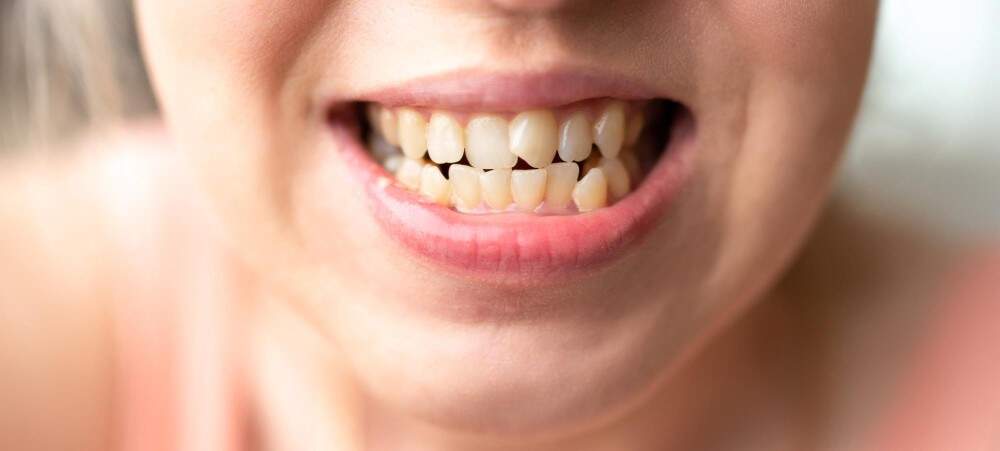If your mouth is lacking a full set of teeth, you can substitute them with a traditional removable denture. However, you are not required to settle for ordinary false teeth. Alternate solutions for restorative treatments include an implant-supported full arch bridge, an implant-retained denture, or repaired teeth in a day. Dental implants are used in all of these treatments to secure the replacement of missing teeth.
To restore a lost tooth root, a dental implant is put into the jawbone. The implants, which are often comprised of titanium, can support replacement teeth such as solitary crowns, multi-tooth bridges, and complete dentures. Dental implants are advised for their sturdiness, hardness, biting capacity, and longevity. They also have the appearance, texture, and functionality of real teeth.
Dental implants help to reduce bone loss (resorption). Substitute teeth are attached to titanium posts that serve as the tooth’s root by bonding with the jaw. Implants are the sole method for tooth replacement that both maintains and promotes bone formation. This could also aid in the preservation of your visual shape.
If you have missing teeth or loose, unpleasant, and badly fitting dentures, consider the following implant-supported restoration work:
Fixed Porcelain Dental Bridges
A fixed (non-removable) dental bridge is a pragmatic and long-lasting alternative for restoring missing teeth.
Bridges are classified into numerous categories. Porcelain fixed bridges, nevertheless, are the most desirable since they most closely mirror the appearance and sensation of your real teeth. This bridge is made up of two crowns that fit over two anchorage teeth (abutment teeth) and are linked to one or even more prosthetic teeth (pontics), which fill the void left by missing teeth.
A porcelain fixed bridge is an excellent choice for:
- Restoring your smile by filling the gap left by missing teeth
- Restoring chewing and speaking abilities
- Keeping your remaining teeth from shifting out of place
- Keeping your original facial shape
- Transitioning from a removable partial denture to a fixed dental appliance
A fixed bridge installation normally necessitates two or maybe more visits. While the teeth are sedated, a portion of the enamel on the two supporting teeth is removed to allow for the placement of a crown.
Following that, a highly exact impression of your teeth is taken and transported to a dental laboratory, where the bridge is created. Afterwards, until your subsequent appointment, you should be equipped with a temporary bridge.
To ensure a correct fit, your permanent bridge will be thoroughly considered, modified, and bonded to your abutment teeth at the return appointment. Dentists may simply briefly cement the bridge to give your teeth and tissues time to adapt to the new one. The rebuilt bridge will then be permanently sealed at a later date in this situation.
After your procedure, you will be given the doctor’s instructions for your prosthetic. Washing, brushing, and visiting the dentist on a regular basis will help prolong the lifespan of your new permanent bridge.
Acrylic bridge supported by four implants
All-on-4 is a form of dental implant that could be right for you if standard implants have been ruled out. Some men and women require this type of implant since the majority or all of their teeth in the lower or upper jaw are gone.
As a result of the state of their oral health, some patients may not be candidates for conventional implants. With All-on-4, you might be eligible to obtain the long-lasting, lovely teeth implants you desire.
Numerous people are concerned about osteoporosis. If you have much less bone mass in your jaw, standard dental implants might not be capable of supporting your style and comfort. All-on-4, on the contrary, may be a possibility for you.
All-on-4 has a significant impact. It is less time-consuming to implant than standard implants. It is recommended for individuals who have lost all of their teeth.
Furthermore, this technology is less intrusive and necessitates fewer preparatory operations preceding implementation. This treatment is also less expensive than alternative options for total tooth loss.
A bar (often composed of titanium) links the acrylic implants. This is a simple feature and was the initial product on the market.
This procedure is most appropriate for people who do not clench or grind their teeth. It is the cheapest choice and the simplest to repair if necessary. It comes in a wide range of sizes and shapes.
It also has a gentler bite than some other products, giving it a more serene environment. Nonetheless, it lacks the attractiveness of comparable items. They also do not endure as long. They might deteriorate and demand some upkeep over time.
Removable clip-retained denture (implant-supported overdentures)
Overdentures, implant-supported overdentures, bar-retained dentures, locator implants, snap-on smiles are all names you’ve certainly heard. If you’re questioning how they’re all connected as well as which choice is best for you, don’t fret—it’s not that difficult.
An implant-supported overdenture, also known as an implant overdenture, is a detachable denture that is anchored by dental implants.
The implants would then be outfitted with a specific snap-in or click-in gear that secures the dentures. Implant-supported dentures can offer greater functionality, convenience, and security than regular dentures.
Implant-supported overdentures are even further classified into two types: bar-supported overdentures and locator-retained overdentures:
- Implant overdentures supported by bars: A thin metal bar that fits the contour of your jaw and is linked to the implant posts in the jaw is included with this kind of denture. Hooks or even other connections are attached to either the denture or the bar. The denture is then placed over the bar, and the connections are utilized to secure it.
- Overdentures with locator retention: The overdenture is positioned centrally on the gums and secured by special locator implants implanted into crucial places in the upper or lower jaw. With such a specific built-in retentive connection, the detachable denture is solidly and completely linked to the implants (locator).
Implant-Retained Overdenture Procedure: Step-by-Step
Implant dentures require a multi-step treatment process that can take up to six months to complete.
The following are the primary implant overdenture stages to anticipate:
- X-rays and impressions
If overdenture treatment is considered appropriate, extensive diagnostic procedures, particularly X-ray imaging and mouth impressions, must be undertaken. This is a primary therapeutic preparatory phase that ensures your bone is robust and has sufficient quantity to accommodate dental implants.
- Placement of dental implants
Subsequently, dental implants, which resemble small metal screws, will be inserted into the jaw. It will be permitted to recover for 2 to 6 months to enable the bone to integrate with the implant on a molecular level. You will be given instant temporary dentures to wear during this period while your gums and jawbone recover.
- Locator Attachment
A second procedure may be necessitated in some cases, during which the implant dentist will connect locators to the implants, which again will emerge from the gum to anchor the overdentures. This treatment normally necessitates an additional two weeks of recovery time.
Nonetheless, in other circumstances, the anchors are inserted at the same time as the implant posts. A dentist will examine your particular condition and discuss the most suitable treatment course throughout your consultation visit.
- Overdenture Placement
Ultimately, a personalized set of dentures will be made to match the color and contour of a genuine set of teeth. Following the completion of the regeneration phase, the dentures will be attached to the finders to provide a tight, non-slip fit and a natural-looking grin.
Denture stabilization
One of the simplest and most cost-effective methods of restoring all the teeth in one jaw is to use implants to attach, but really not sustain, a denture. Implant-stabilized dentures sit on the gums but are held in place by two or four implants with locator abutments. The connectors function similarly to press-stud fasteners on clothing.
They fit within the denture and can be altered to provide greater or lesser retention. They act similarly to traditional dentures, but with no horizontal mobility. The plates are simple to disassemble for cleaning. Individuals can frequently use their existing dentures, but most of the time, a new one is required.
Am I a candidate for implants?
Dental implant treatment is tailored to the individual. The type of restoration suitable for you will depend on the number of teeth you have lost, where your teeth are missing, and your overall health.
If you currently have removable dentures, you might well have bone or tissue loss that must be corrected prior to the implants being inserted. Your dentist will perform a comprehensive assessment to determine which restoration option is appropriate for you.
The Advantages of Using Dental Implants to Replace All Missing Teeth
Full-mouth dental implants are far superior to traditional dentures. Here’s why:
- This is a long-term solution. A denture may have a lower initial cost, but it isn’t a permanent tooth restoration solution. Bridges and dentures frequently need to be serviced and even rebuilt over the course of your life, which can be costly in the long run. Dental implants have a successfulness of 97%, which is substantially greater compared to any other tooth replacement alternative.
- Care standard. Dental implants are now considered the “gold standard of care” for lost teeth since the jawbone bonds with the titanium implant and provides a firm basis for the new crown. As nothing more than a consequence, the replacement is sturdy and durable, and it appears, feels, and performs just like genuine teeth.
- Care is simple. Because dental implants work like normal teeth, you should treat them the same way you might treat other healthy teeth by practicing proper everyday oral hygiene.
Risks of not replacing missing teeth
Once missing teeth are neglected, a variety of problems might arise:
- Resorption of bone. When teeth are removed from the bone, your body concludes that the bone is no longer mandatory for functioning and proceeds to dissolve, leading to up to 4 mm of osteoporosis in a year. Lacking adequate bone structure, your appearance radically changes, potentially adding 10–20 years to your age.
- Irritation and functional loss. Speaking and laughing might be difficult when you have missing teeth, not only psychologically but also physically.
- Extra health concerns. Missing teeth might result in various health problems, such as gingivitis and even heart problems. The mouth is the entryway to the body, and many health problems begin there. By restoring missing teeth with dental implants, you are ensuring a healthy life for decades to come.
Full-Mouth Dental Implant Procedure
Every step along the way, the dental implant staff at an Albanian clinic will guarantee that you are relaxed and comprehend the dental implant treatment.
- Treatment planning and consultation. Based on your particular situation, the technique for replacing all missing teeth with dental implants may change. Their staff will discuss with you the best course of action for your specific case and start preparing you for the impending treatment and recovery period.
- Implant insertion. Full-mouth dental implants may appear intimidating, but their well experienced staff will end up making the surgery as painless as possible. If sedation is required, their experts can use it to keep you calm all through the process. Four to six titanium fixtures will be implanted in the jaw throughout the surgery to enable the full-arch dental implant prostheses to mount on top.
- It’s time to rest. Dental implants can be implanted in as few as one visit, but the whole recovery and recuperation time can range from three to six months, according to how your body reacts and your present health. You’ll leave the clinic with a provisional implant-supported prostheses, but you won’t be able to fully operate in that location till the bone recovers. You will be advised to consume soft meals for a period of time as the freshly inserted implants settle into the bone. You’ll probably see the surgeon who installed the implants a few times for postoperative examinations. After your implants have been completely incorporated into your jawbone, you will receive a final implant-supported prostheses with a titanium bar for sturdiness. These prostheses, like the interim one, are fastened into your dental implants and must only be removed by a surgeon.




